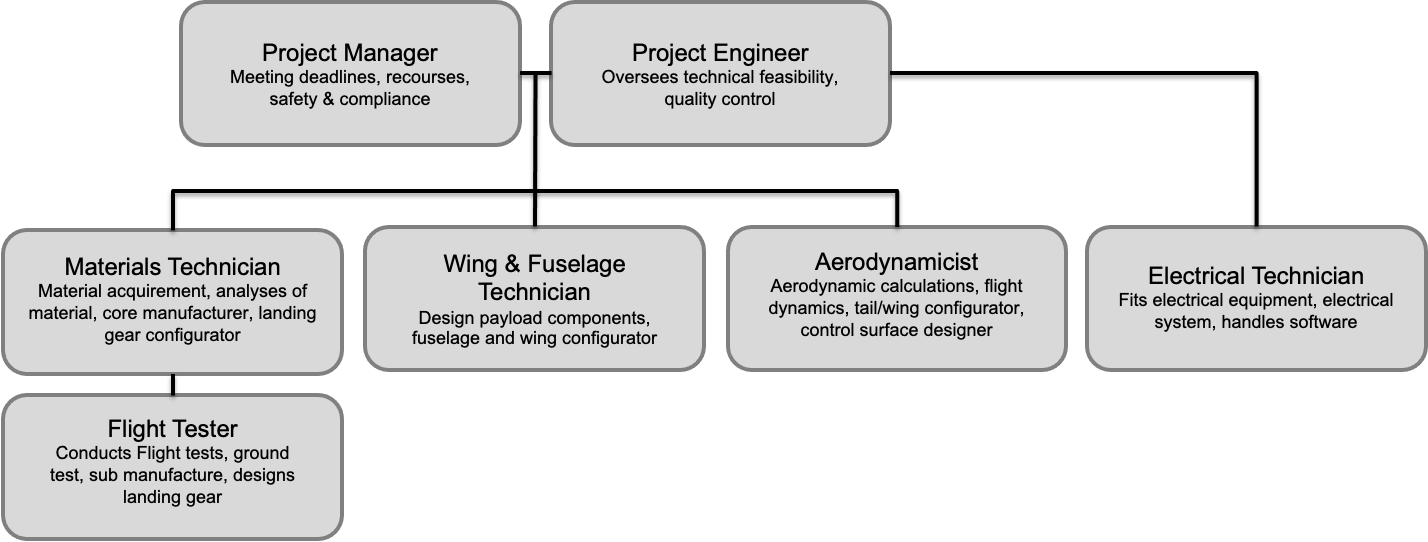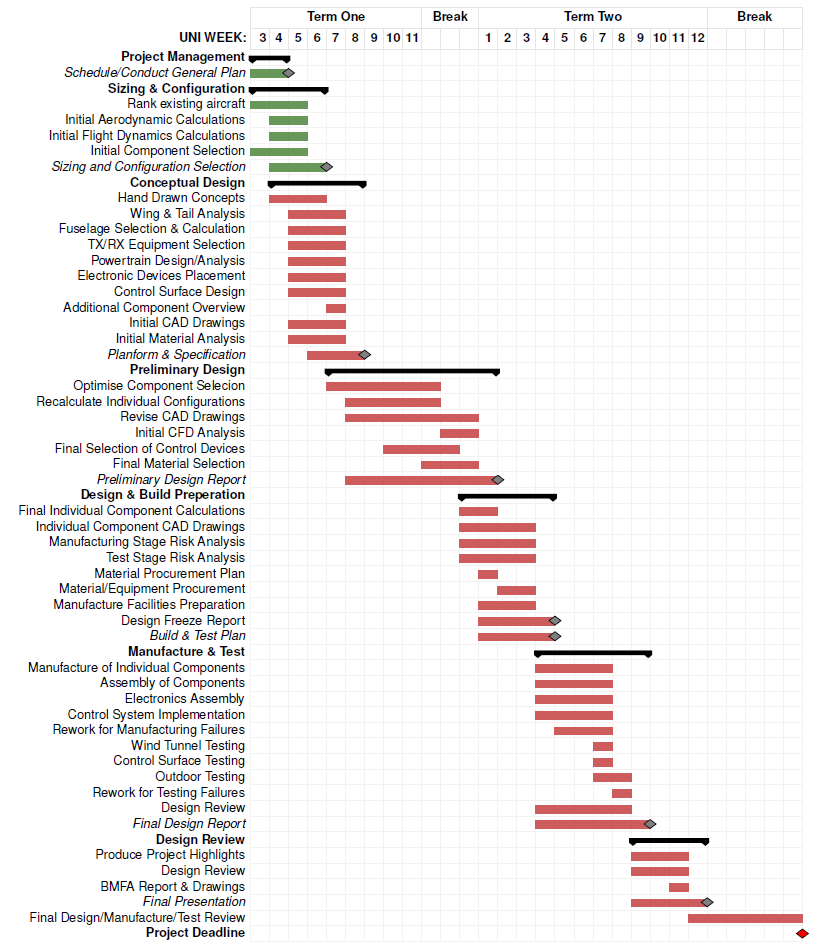Project Management
The team consists of individuals with a variety of technical strengths and creative flair. Figure 1 shows the working structure of the group along with the general tasks given to each role. There is a total of seven roles amongst six people. With a broad range of tasks to be completed across the project and a limited team size, some roles were merged noting mainly that the project engineer will have a hand in the electrical systems of the project in order to completely utilise their technical strengths. During the initial design phase, these roles will be maintained in order to have a steady work flow, however, as the project shifts toward manufacturing, team members will migrate to more manufacturing focussed roles. These roles will be specific to the components that the individual has designed or configured allowing for a smooth transition and time saving. Overall the team will be working together and sharing ideas and tasks accordingly. Newly discovered tasks or those without a clear role assignment will go to the team manager to allocate to the member with the most appropriate skill set.

In order for the team to progress as a whole, team meetings will take place every week to complete progress checks and informal peer assessments. This will allow for a more open form of communication, utilising individual technical skills and correcting any errors that may have been overlooked by other members. Minutes will be taken to assure a smooth iterative design process and ensure mistakes are not repeated. The same method will be followed during the manufacturing and test stages.
Gantt Chart#
The Gantt chart in figure 2 shows the individual tasks needed to meet predefined milestones. These milestones, marked with grey diamonds, are usually accompanied by a project deliverable, with the final project deadline marked in red.
